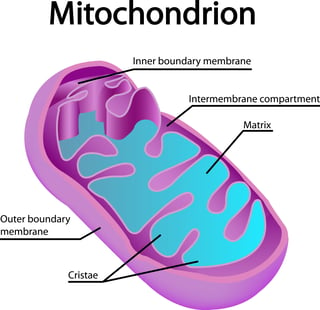 INTRODUCTION
INTRODUCTION
When we speak of mitochondria, anyone with knowledge of life science could tell you of its presence in animal cells and absence in plant cells. However, it should not be forgotten that another kingdom shares this cellular powerhouse - kingdom fungi.
Standard protocols for mitochondrial DNA (mtDNA) isolation in eukaryotic cells tends to be fairly straightforward. These procedures rely on cellular lysis, followed by extraction and then lysis of mitochondria, and lastly purification of the mtDNA. However, this process is hindered from the very beginning when applied to yeast cells. While typical lysing methods are effective at disrupting eukaryotic cell membranes, the thick chitinous cell wall found in yeast are not so easily dissolved. These protective structures hinder access to intracellular proteins and organelles. To counter this, hydrolytic enzymes can be used to preemptively disintegrate the cell wall prior to cell lysing. Doing so allows us to be able to effectively isolate the mitochondria and get a higher yield of mtDNA from yeast cells than would be possible through standard eukaryotic mtDNA extraction procedures alone.
SPHEROPLAST PREPARATION
The first step to extraction of mtDNA from yeast cells is to convert a culture of yeast cells to spheroplasts. Spheroplasts are cells that have undergone enzymatic removal of the cell wall. Removing this rigid structure causes cells to take on a spherical shape due to surface tension of the cell membrane.
The Yeast Protein Extraction Lysis Buffer™ kit helps make it simple to prepare spheroplasts. After homogeneously suspending the culture sample in suspension buffer, hydrolysis of the cell wall occurs with the addition of a proprietary enzyme. This enzyme, LongLife™ Zymolyase®, is able to break through the cell wall’s rigid barrier without damaging organelles or DNA within the cell. Once this step is complete, DO NOT proceed to lysis using this kit. The lysing buffer contained in this kit is specified for cellular protein, and would make it extremely difficult to isolate mtDNA without contamination of nuclear DNA and other proteins. Instead, we recommend proceeding with a eukaryotic mitochondrial DNA extraction kit.
CELL LYSIS & ISOLATION OF MITOCHONDRIA
While many mtDNA extraction kits are specified for animal tissue, fungal samples can also be effectively processed using standard procedures after removal of the cell wall. With the XIT™ Mitochondrial DNA kit, the spheroplast pellet obtained from the previous kit can be utilized as the first cellular pellet in the protocol. The initial buffer in this kit enables effective lysing of the spheroplast without damaging internal organelles. Afterwards, the mitochondria are isolated through differential centrifugation.
mtDNA EXTRACTION
The XIT™ kit contains all necessary components for both isolation and extraction of mitochondrial DNA. Once the mitochondria are lysed using the Mitochondria Lysis Buffer provided in the kit, access to mtDNA is possible through use of LongLife™Proteinase K and XIT™ Protein Precipitation Buffer. These components digest and then precipitate mitochondrial protein containing mtDNA. The mtDNA can then be isolated following simple DNA precipitation techniques, as listed in the XIT™ kit instructions.
Some further reading that may help:






